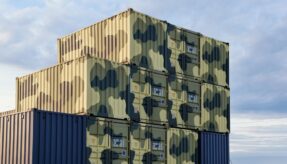
The Ministry of Defence has published the Defence Technology Framework (DTF) and Defence Innovation Priorities (DIP) to define how defence will face the accelerating pace of technological change in the years to come.
The documents respond to the Modernising Defence Programme’s three central objectives: To mobilise to tackle today’s challenges; modernise to meet future threats; and transform to become an agile and innovative organisation.
This includes identifying technologies that can revolutionise defence as well as outlining a more sophisticated relationship with industry.
The Defence Technology Framework sets out Defence’s assessment of the technology areas with the greatest potential to transform military capabilities.
The ‘seven families’ of technology – from Artificial Intelligence and advanced materials to energy storage and cutting-edge sensors – have the potential to revolutionise defence and will shape collaboration with international partners and the UK’s world-class academic and industrial base.
Possible applications include deployed 3D printing, space tracking and communications, enhanced Intelligence, Surveillance, and Reconnaissance (ISR), cyber defence, and automated logistics.
The Defence Innovation Priorities identifies where collaboration with the civil sector can help with Defence’s most pressing problems. The Priorities define defence’s new relationship with industry, driving cultural change within both parties to ensure the benefits of private sector innovation are translated effectively into the public sphere.
The document outlines five priority areas for collaboration with the civil sector, including how the MOD can access the people with the right skills and experience and how the complexity of the battlefields of the future can be simulated in training.
The MOD has made a series of recent investments aimed at harnessing the potential of the UK’s world-leading scientific and industrial base.
The Transformation Fund, announced as part of the Modernising Defence Programme, will deploy £160m on fast-tracking new military capabilities onto the frontline.
Projects already funded include ground-breaking blood clotting technology which will save lives on the battlefield and two new autonomous minehunter vessels which will give the Royal Navy more flexibility in the face of rapidly changing underwater threats while keeping sailors safe.
Making the announcement at the DSEi conference in London, Vice-Chief of the Defence Staff Admiral Tim Fraser, said: “Both the Framework and Priorities will not only guide the approaches of our major industry suppliers, but of SMEs, entrepreneurs and academia and our public sector partners and international allies.
“They give us a clear strategic roadmap and will shape our investment in the future.”
If you would like to join our community and read more articles like this then please click here.
Defence Innovation Priorities Defence Technology Framework DIP DTF







